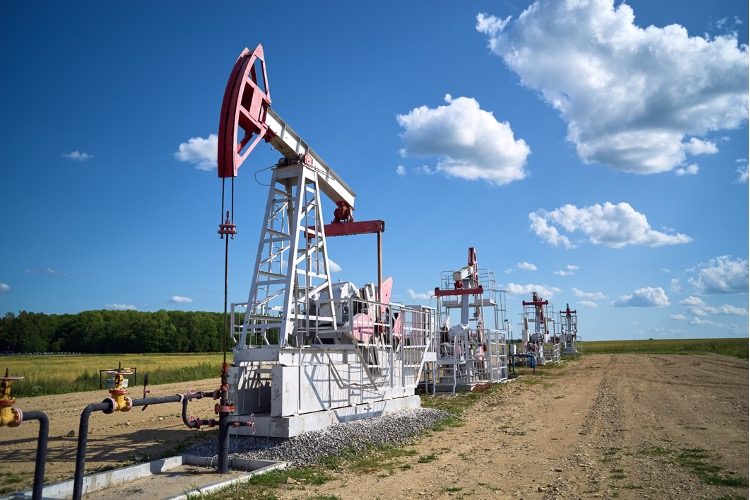
American policymakers find themselves in a bind: They remain committed to Ukraine while increasingly recognizing that the economic stability of the West still heavily relies on Russian oil.
This contradiction was exemplified in recent days as Washington asked Kiev to pause its drone strikes on Russian oil refineries, fearing that such attacks would hike up international prices of crude oil and incite Moscow to retaliate against the West’s energy resources. The request from D.C. came after Ukrainian President Volodymyr Zelensky alleged last week that the Russian military fired 60 drones and more than 70 missiles at Ukraine, as reported by Politico.
Throughout 2023, Moscow launched assaults on Ukraine’s energy infrastructure. In response, Kiev managed to target multiple oil refineries in Russia, inflicting financial losses on the Kremlin, which continues to engage in oil and gas trade despite facing sanctions.
But the demands from Washington were met with derision from Ukrainian allies in D.C. Daniel Vajdich, president of Yorktown Solutions (a consultant for Ukraine’s state-owned energy outfit), told Politico:
I don’t recall the White House having an issue with Ukrainian drone attacks against Moscow’s elite suburbs or other non-energy targets. I think Russia’s energy infrastructure is more sensitive for them, especially in an election year. At the same time, I don’t see how Ukraine can establish some semblance of deterrence without putting at risk Russia’s energy infrastructure. They should be allowed to do this.
One Biden official who spoke to the outlet, while remaining silent on the matter of Washington’s alleged directing not to target Russian energy facilities, nevertheless defended the administration on the grounds that “We have long said that we do not encourage or enable attacks inside of Russia. What we are doing is helping Ukraine defend itself against Russian aggression.”
According to Ukraine’s energy ministry, the Russian assault on Friday brought the Zaporizhzhia nuclear power plant perilously close to a blackout. The Zaporizhzhia facility, which is the largest nuclear plant in Europe, has been under Russian occupation since 2022. Zelensky seized upon the attack to appeal for increased military assistance from Ukraine’s allies, including the United States.
Currently, funds for Ukraine from the European Union are being held up among deliberations. During a summit on Thursday, EU leaders clashed over the issue of European funding for weapons for Ukraine. They tasked the European Commission with “investigating all avenues for securing funding and providing a report by June.” Similarly, in Washington, progress on a $60 billion military aid bill has been stalled for months due to political wrangling between Democrats and Republicans in Congress.
The Russian Defense Ministry acknowledged launching a series of attacks, which included hypersonic Kinzhal missiles, targeting Ukrainian energy infrastructure. They justified this action as retaliation for Ukrainian assaults on Russian border areas.
Moscow released the following statement:
From March 16 to 22, in response to the shelling of our territory, attempts to break through and the capture of Russian border settlements, the armed forces carried out 49 retaliatory strikes with high-precision, long-range air-based weapons, including Kinzhal aeroballistic hypersonic missiles, missile systems, and unmanned aerial vehicles.
According to local authorities in Ukraine, five individuals lost their lives, more than 20 sustained injuries, and three remain unaccounted for. A bus driver en route to his morning shift at the Zaporizhzhia dam was killed by Russian forces. There were no passengers aboard the bus at the time.
Former deputy Prime Minister Ivanna Klympush-Tsintsadze, now an opposition lawmaker, said Kiev needs “more Patriot air defense systems that only the Americans can supply.”
Some analysts believe that without continued international support, Ukraine could struggle to maintain its defenses in the short term, facing a potential risk of being overwhelmed by Russian forces. While it is difficult to predict exactly how long Ukraine can last against Russia without international support, it is clear that military and financial aid from the United States and European nations has been instrumental in bolstering Ukraine’s defense capabilities. Both sides are likely experiencing a depletion of resources, including military equipment and manpower.
If Ukraine was hoping that the war would end by means of a regime change in Moscow, those hopes were dashed by the results of the Russian presidential election. Earlier this month, Vladimir Putin cruised to reelection with 87 percent of the vote — the highest margin of any presidential election in Russia.
It remains to be seen whether a compromise will be reached in the Russia-Ukraine conflict. In one possible peace scenario, Ukraine might agree to neutrality, meaning it wouldn’t join NATO, in exchange for Russia withdrawing troops and respecting Ukrainian sovereignty. And Russia might solidify control over eastern Ukraine and Crimea, while Ukraine maintains control over the west.
But these scenarios require political leaders willing to give as well as take. For the moment, Washington and European leaders have been unwilling to make any concessions that could lead to peace. For the foreseeable future, then, the war is poised to continue.




